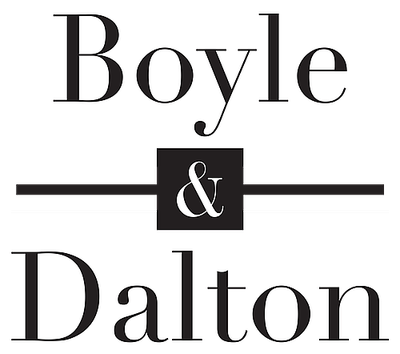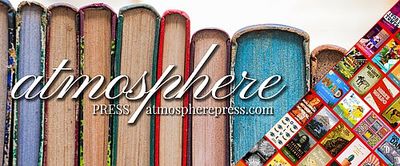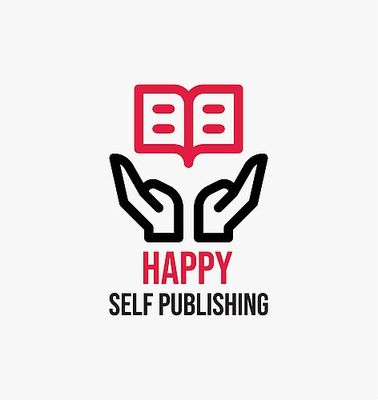Asking the question, "Why do teachers have unlawful relationships with students? ...by a teacher who did
Across the United States, almost daily, a news story is reported about another teacher who was recently arrested for having an inappropriate relationship with a student.
The contemporary American educational system is currently plagued by a number of issues, but the one creating the most media buzz is the repeated series of instances regarding illegal physical relationships between teachers and students. Teachers are given little-to-no training on this issue. Other than the annual required sexual harassment speech given to teachers at the beginning of every school year, the issue is rarely (if ever) mentioned in a preventative manner. The epidemic of teacher-student relationships is eating away at the bedrock of the American educational system, and it is not being adequately addressed. Any half-effort attempts at merely acknowledging the problem are overshadowed by the numerous instances of ineffectiveness proven by the repeated news stories featuring the latest teacher being charged with some manner of sexual misconduct.
After 3PM, in 61,000+ words, provides a clear examination of why teachers — typically high school teachers — reach a point in their own cognitive distortions when they think it is permissible to carry on an adult-like physical and/or emotional relationship with a student. And I am asking this question from a very personal and unique perspective because I was one of those teachers.
Unfortunately, teachers and school administrators both struggle with the same problem: They are unaware of the actual problem or how to actually fix it; they only see the result, the aftermath, and the damage. This problem is not simply that teacher and students are having inappropriate relationships. That is merely the result. The problem is much deeper, much more complex, and much more obvious than anyone wants to admit.
Essentially, I am asking and answering the simple (yet complex) question: Why?
The time for depending on “individual responsibility” on this issue has passed. A concerted effort by the entire faculty of every school must be put forth because there is one simple fact that teachers and principals tend to overlook: The teachers they see on the news are simply the teachers who were caught.
Additionally, this book addresses the issue uniquely: from this perspective. Educators see disgraced teachers like me on television, shake their heads at our horrid choices, see we are going to prison, and then never hear from us again; out of sight, out of mind. Therefore, another purpose of this book is to provide a glimpse into what happens to teachers when we aren’t the top news story anymore, forced to live in the shadows of humiliation and disgrace. I use my own narrative experience as an eye-opening example of what happens to a teacher, both before the news story airs and after it has faded into the archives.
I. Overview
After 3PM, in 61,000+ words, provides a clear examination of why teachers — typically high school teachers — reach a point in their own cognitive distortions when they think it is permissible to carry on an adult-like physical and/or emotional relationship with a student. And I am asking this question from a very personal and unique perspective because I was one of those teachers.
Unfortunately, teachers and school administrators both struggle with the same problem: They are unaware of the actual problem or how to actually fix it; they only see the result, the aftermath, and the damage. This problem is not simply that teacher and students are having inappropriate relationships. That is merely the result. The problem is much deeper, much more complex, and much more obvious than anyone wants to admit.
Essentially, I am asking and answering the simple (yet complex) question: Why?
The time for depending on “individual responsibility” on this issue has passed. A concerted effort by the entire faculty of every school must be put forth because there is one simple fact that teachers and principals tend to overlook: The teachers they see on the news are simply the teachers who were caught.
Additionally, this book addresses the issue uniquely: from this perspective. Educators see disgraced teachers like me on television, shake their heads at our horrid choices, see we are going to prison, and then never hear from us again; out of sight, out of mind. Therefore, another purpose of this book is to provide a glimpse into what happens to teachers when we aren’t the top news story anymore, forced to live in the shadows of humiliation and disgrace. I use my own narrative experience as an eye-opening example of what happens to a teacher, both before the news story airs and after it has faded into the archives.
______________________________________________________
II. Target Audience
After 3PM targets the secondary-level educational community, not because everyone is at risk of having a relationship with a student, but instead, teachers and principals need to know which battles to fight and how to fight them — which warning signs to see, and how to see them.
Teachers, future teachers, and school administrators need to see what happens, not just when they are arrested, convicted, and sent to prison; they need to see what it is like to re-enter the world, knowing they cannot – ever – be a teacher again. That is the reality in which I now exist, and they need to see what a ruined life looks like.
______________________________________________________
III. About the Author
In 2010, while teaching high school English, literature, and writing, I had a brief relationship with a former student; and in 2012, I was arrested and sent to prison for a little over two years. However, I am not writing about myself or my crime (rather, using my own experiences and anecdotes and examples), but instead, I am addressing the overall issue — bringing a new and unique perspective to the conversation.
In addition to writing After 3PM, I am also giving speeches and personal appearances, regarding this issue, including at the annual national conference of the National Associate of State Directors of Teacher Education and Certification (NASDTEC) in Phoenix, Arizona in October 2017.
______________________________________________________
IV. Marketing and Promotion
The marketability of this book has very wide-spread potential: required reading for college teacher-education courses; recommended reading for current teachers and administrators; bulk purchases by school districts for teacher trainings; parents of soon-to-be high school students; and it has the pop-culture appeal of including the aspects of scandals, secrets, sex, crime, punishment, repentance, and redemption. Thus, there is considerable potential regarding the possible audiences of this book. And yet, the overall purpose of this book is exponentially more important than its possible marketability because it fills a void and brings a very hush-hush issue in the educational community to the forefront of the conversation.
______________________________________________________
Intended audience for this book includes current teachers, future teachers (either in college or beyond), parents of students, or the general public.
The marketability of this book has very wide-spread potential: required reading for college teacher-education courses; recommended reading for current teachers and administrators; bulk purchases by school districts for teacher trainings; parents of soon-to-be high school students
This book is unique because it offers a nonfiction and constructive view of an issue which is typically only addressed in fiction. Comparable titles are few-and-far-between, making this a unique reading and learning experience from a unique perspective.

An ex-teacher, formerly imprisoned for an unlawful relationship with a former student, provides a deep insight into causes, warning signs, and solutions to this ongoing epidemic.
250 copies • Completed manuscript.
Atlantic Publishing has been providing millions of readers information to jumpstart their careers, start businesses, manage employees, invest, plan for retirement, learn technologies, build relationships, and live rewarding, fulfilling lives. Our award-winning authors and publication staff strive to make our products the best and most up-to-date available. We go further than most publishers to get our customers the best products.

250 copies • Completed manuscript.
Boyle & Dalton was founded in 2014 and publishes works of fiction, non-fiction, and poetry. The world of publishing is changing, we're changing with it. Our founder Brad Pauquette, conceptualized a hybrid model that balances the financial and rights model of self-publishing with the quality controls and production excellence of a traditional publisher. Our designers and editors produce exceptional books that are distributed in both print and digital formats to all major retailers, including Amazon.com and BarnesandNoble.com. Boyle & Dalton carefully consider all submissions for publication, based on manuscript quality. We do not accept erotica or children's books.

Since 2002, Lulu has enabled more than 1 million authors in more than 225 countries and territories to self-publish nearly 2 million publications. Our industry-leading tools, worldwide print network and global community help authors hone their craft and publish printed books and eBooks for FREE. Offering the largest Indie bookstore at Lulu.com and distribution services, you can sell in online bookstores around the world. With Lulu, authors are in control, forever owning the rights to their works, setting their own price and keeping 80 percent of their book profits and 90 percent of eBook profits.

Looking for entrepreneurship, business, self-help, and personal growth books.
Morgan James Publishing has revolutionized book publishing—from the author’s standpoint, earning 29 NY Times and over 100 USA Today and Wall Street Journal best sellers. We teach authors strategies to leverage their books and grow their businesses—adding value while staying out of the way. Evidenced by more Major Media best sellers than most publishers our size. Regularly ranked by Publishers Weekly as the most recognized and one of the fastest-growing publishers in the nation, Morgan James is reported to be “the future of publishing.”

Dear Author,
You worked hard to write your manuscript, and you know that expert assistance is needed to ready it for the market. But perhaps you didn’t realize that working with a publisher is no longer necessary—especially publishers who charge fees to produce your book upfront and "share" more of your revenue whenever a book is sold.
1106 Design is an author services company that has served over 4,000 authors since 2001. We offer all the editorial and design services you’d expect from a publisher, transforming your manuscript into a polished book. But here's the difference: we help you secure print-on-demand printing and worldwide distribution in YOUR name. This means you'll earn several dollars more for every book sold instead of a meager “royalty” and never lose control of your book or your book files.
We understand that your book is not just a passion project but also a potential source of income. No two books or authors are alike. That's why we'll customize a package of services tailored to your needs at affordable prices, starting at $5,555. And here's the best part: after this one-time investment, every penny of revenue from book sales is deposited directly to your bank account, never to ours first.
If this sounds like a better way to publish your book, I invite you to browse our services, design samples, no-surprises pricing, outstanding customer reviews, and educational articles at https://1106design.com. You can download a free PDF of my book, "Publish Like the Pros: A Brief Guide to Quality Self-Publishing and an Insider's Look at a Misunderstood Industry," and request a free, no-obligation consultation.
1106 Design is rated A+ by the Better Business Bureau. We are a “Highly Recommended Expert” at IngramSpark.com and rated "Excellent" at Alli, The Alliance for Independent Authors, at SelfPublishingAdvice.org. Alli's "watchdog list" of the best and worst publishing services companies is an invaluable resource.
How can we serve you today?
Sincerely,
Michele DeFilippo, owner

250 copies • Partial manuscript.
Atmosphere Press is an independent publisher dedicated to author rights. We publish in all genres and have an exceptional editorial, design, and promotional staff. We stand for Honesty, Transparency, Professionalism, and Kindness. We want our authors and their readers to be blown away when they first hold that book in their hands. It needs to look good inside and out, and feel good to the touch. And, of course, the words need to be top-notch, and our editors are devoted to making that the case.

250 copies • Partial manuscript.
Authors Unite helps you become a profitable author and make an impact. We take care of printing and distribution through major online retailers, developmental editing, and proofreading with unlimited revisions. We take care of the entire process for you from book cover design all the way to set up your backend so all your book royalties go straight to your bank account. We can also help with ghostwriting if you prefer not to have to figure out all the steps on how to write a book yourself.
With our book marketing services, you don’t need to worry about figuring out all the steps on how to market a book or how to become a bestselling author. We’ve helped hundreds of authors become bestselling authors on Amazon, USA Today, and The Wall Street Journal. We take care of the entire book launch process for you to help you sell thousands of copies of your book and become a bestselling author.
View case studies here: https://authorsunite.com

100 copies • Partial manuscript.
Bookmobile provides book printing, graphic design, and other resources to support book publishers in an ever-changing environment. Superior quality, excellent customer service, flexibility, and timely turnarounds have attracted nearly 1,000 satisfied clients to Bookmobile, including trade houses, university presses, independent publishers, museums, galleries, artists, and more. In addition, we manage eBook conversions and produce galleys, and regularly provide short-run reprints of 750 copies or fewer for major publishers such as Graywolf Press.

100 copies • Completed manuscript.
Happy Self Publishing has helped 500+ authors to get their books self-published, hit the #1 position in the Amazon bestseller charts, and also establish their author website & brand to grow their business. And the best thing is, we do all this without taking away your rights and royalties. Let's schedule a call to discuss the next steps in your book project: www.meetme.so/jyotsnaramachandran

Ingram is a rather large company with several different divisions and supplies books to bookstores and libraries in over 200 countries around the world. Ingram also has a print on demand digital printing company, Lightning Source. IngramSpark is the platform that combines those two services together. At IngramSpark, we work with authors and independent publishers to print their books for orders they need (no minimum order) and we have a way to list the books as available for sale to all of Ingram’s 39,000+ customers- distributors, bookstores, retail outlets, libraries, etc., so you never miss a sale. You would provide us with the print-ready digital files (one for the cover and one for the interior) and we print the books as they are sold through our distribution partner’s websites. We pay you for those sales approximately 90 days later. The compensation you earn is based on the retail price you set, minus the wholesale discount you offer our distribution partners, minus the print cost.

100 copies • Completed manuscript.
Jetlaunch book design and project management services give you back the hours you need to grow your publishing business. We've done work for John Lee Dumas, Ed Mylett, Rachel Pedersen, Dan Sullivan, Aaron Walker, Amy Landino (Schmittauer), Kary Oberbrunner, Jim Edwards, and many publishing companies. You retain all rights and royalties.

Get your ebooks into the biggest stores and keep the 100% of your royalties. Amazon, Apple iBooks, Google Play, Kobo, Nook by Barnes & Noble and more.

The epidemic of teacher-student relationships is eating away at the bedrock of the American educational system, and it is an epidemic which is not being sufficiently addressed. Any half-effort attempts at merely acknowledging the problem are overshadowed by the numerous instances of ineffectiveness proven by the repeated news stories of the latest teacher charged with some manner of sexual misconduct with a student.
However, this book does not seek to answer the questions surrounding why certain teachers are sexual deviants. Teachers arrested for child pornography and sexual exploitation, or teachers who are arrested for abusing children in elementary school — these teachers aren’t in the same ballpark as those to which I refer. Teachers who prey on small prepubescent children, or who seek pictures and videos of these children are sick predators who deserve every single second of prison time they receive. So I will not even attempt to pry into the demented mind of someone who is attracted to elementary-age children. That is an entirely separate pathology which I’m not sure I even want to understand.Listen: My choices were not the fault of the school administration or a lack of training. My choices were not the fault of my universities or a lack of education. My choices were not the fault of my personal struggles or my lack of happiness.There are two dominating questions regarding this issue that have not been sufficiently addressed
“Why is this happening?
“What can prevent this?
I am asking these questions from a very personal and unique perspective; I was one of those teachers. In 2010, I had a brief relationship with a former student who was fifteen at the time; and in 2012, I was arrested and sent to prison for more than two years. But this book is not about me or my crime. This book is about the overall issue — I am simply bringing a new and unique perspective to the conversation
I am merely asking the simple (yet complex) question: Why?
make the choices I made because I was a sick deviant who sought-out intimacy with an underage girl. The fact is, it took me years to understand why I made the choices I made, but in the end, I discovered I was asking the wrong question. The question I was asking was, “Why did I make the choices I made?” However, the question I should have been asking was “Why did I think the choices I made were acceptable?” At first glance, they seem to mean the same thing, but in reality, they could not be more different.
At no point to do I seek to minimize or justify my choices or behaviors. At 100% of the time, I was 100% in the wrong. So do not view my perspective as, “What could have prevented me from making these choices?” Instead, view it as, “How can the viewing of this issue change in order to prevent it from happening in the future?” I am not trying to justify how my actions could have been prevented; I am trying to change the conversation entirely, to see it differently, to perceive it differently, to address it differently, to approach it differently.
Writing this book forced me to take a very difficult journey, coming face-to-face many of my own demons. And while I am conscious of the choices I made, the terrible things I did, and the lasting impacts my choices have on others, I am also thankful for my time in prison. Prison was the jolt I needed to get my head on straight and correct my way of thinking.
The purpose of this book has very little to do with the relationship I had with my former student — it will serve as an anecdote and a narrative. My hope is to bring a depth of reality to the issue beyond the limited details released by the news media by giving deeper details and making it more “real.” Details and dialogue tend to do that. I do not include the specifics of my own experience for any purpose other than to add a depth of understanding to what a person goes through when these choices are made and these processes are put into motion. Most (if not all) of the details I recount are things for which I will always feel shame and embarrassment.Therefore, for the purposes of these writings, the student with whom I had the relationship will be referred to as “Taissa.”
This is obviously not her real name, and although public court documents identify her only as “RLF,” I have decided to refrain from identifying her in this narrative by her actual name as a matter of privacy to her. This is a book about why teachers in these situations make the choices we make and what can be done within the school systems to shed light on this issue with the goal of preventing instances of teacher-student relationships in the future.
This is not a book about my crime; this is an in-depth narrative about how these situations emerge, what happens when these situations are discovered, the aftermath of these situations, and the truth about why this epidemic continues to plague the educational communityUnfortunately, teachers and school administrators both struggle with the same problem: They have no idea what the actual problem is or how to actually fix it; they only see the result, the aftermath, and the damage.
It is time to stop merely treating the symptoms and, instead, cure the underlying disease
Essentially, the problem is not simply that teacher and students are having inappropriate relationships. That is merely the result. The problem is much deeper, much more complex, and much more obvious than anyone wants to admit
Every high school teacher and principal should read this book, not because everyone is at risk of having a relationship with a student; instead, everyone needs to know which battles to fight and how to fight them — which warning signs to see, and how to see them
The time for depending on “individual responsibility” on this issue has long passed. A concerted effort by the entire faculty of every school must be put forth because there is one simple fact which teachers and principals tend to overlook: The teachers they see on the news are simply the teachers who got caught.
This particularly unique perspective is necessary. Teachers see disgraced educators like me on television, shake their heads at our horrid choices, hear that we are going to prison, and then never hear from us again. Out-of-sight, out-of-mind. So another purpose of this book is to provide a glimpse into what happens to disgraced teachers when we aren’t the top news story anymore; sent to prison, released from prison, forced to live in the shadows of humiliation and shame. I use my own narrative experience as an eye-opening example of what happens to a teacher, both before the news story airs and after it has faded into the archives
of the news and internet in the latest scandal that rocks the educational community of “Anytown, USA.” People point fingers and say things like “sick” or “horrible” or “pervert” or “pedophile” or any number of words aimed at degrading a teacher for choosing to pursue a relationship with a student. And yet, with all the social backlash and humiliation, these instances do not decrease — in fact, they are on the rise. Teachers increasingly continue to cross the lines of propriety and legality with their students.
But therein lies the crux of my philosophy: People see only what they see, and then they forget — they move on. When I was arrested and sent to prison, I was actually thankful for the fast-paced twenty-four-hour news cycle because it meant my face would be off the news and would fade into obscurity relatively quickly. I was held up for humiliation for a day or two when I was arrested, and then for a day or two when I was sentenced, and that was it. Even my former colleagues probably never give me a second thought anymore
Disgraced teachers are seen on the news, in court, and then being led off to prison, and that’s it — on to the next news story. But what happens after the cameras are off? What happens when the top story becomes old news — after the humiliation, after the sentencing, after prison? The story dies, but the person must live on — the person must pick up the pieces and try to reassemble something resembling normality, often with little (or no) success. And it has been my experience that life after the news — life after prison — has been more difficult than standing in front of a judge, surrounded by news cameras, admitting that I’d had a relationship with a fifteen-year-old former student
— be a teacher again. That is the reality in which I now exist.
Look at me. Look hard
This is what a ruined life looks like.
____________________________________________________________
Finally, someone in a meeting managed to circle around to the issue. The speaker, nearing the end of his presentation said, “And you high school teachers, you’re not that far apart from the students in age, so, you know, just be careful.”
That was it.
That was the only thing she, as a new teacher, heard from anyone — at all — during her orientation. And here’s the kicker: It wasn’t even a school district employee who said that; it was a guy from the Teacher’s Union. He did not make this statement as a representative of the school district; he said it during his pitch to get new teachers to join the Teacher’s Union. So, essentially, the school district itself — the largest school district in the state, the same school district where I taught when I committed my crime — had nothing to say to new teachers about teacher-student relationships.
The one remark I hear the most regarding this issue is, “Well, it should be common sense for teachers not to have relationships with students.” I agree; I completely agree; I couldn’t agree more! But clearly it’s not, because it’s still happening — all the time. So if the mere assumption that it “should be common sense” is the extent of school districts’ attempts at preventing this from happening, then they are, by default and neglect, putting students at risk.
But what can be done? How does a school district prevent teachers from pursuing inappropriate relationships with students? That’s the million-dollar question, but it’s not the first question that should be asked, and that’s the problem. School districts, principals, and even other teachers are seeing a problem and are asking how to solve it. But that cannot be the first question.
The first question must be: Why is this happening?
The problem is not that teachers are having relationships with students — that is the result. The actual problem is much more in-depth, much more complicated, and much more uncomfortable than that. Teachers and school administrators can no longer afford to assume that this is an insulated or isolated issue, specific to only the weird, sick, bizarre, mentally-ill teachers who happen to become mistakenly employed.
It is easier and more comfortable to cast horrific labels on horrific acts and only assume it is because horrific people are making horrific choices, plain-and-simple. Countering upon the possibility that good people can make bad choices makes many people uneasy, uncomfortable, and unusually anxious. After all, if good people are capable of evil, then anyone — any “normal” person — is capable of evil; this is not a comfortable notion to consider. So the human comfort zone includes the instinctive reaction to casting horrific labels on horrific choices.
But why? Why would casting these horrific labels on horrific acts actually be “more comfortable” for a person who perceives themselves as “normal?” The answer to that is simple, and it’s an answer I learned in prison.
Racism in prison is rampant, but oddly enough, it’s not about race — it’s about behavior. When I was in the county jail, spending several weeks waiting to be shipped off to prison, a guy in jail with me (who’d been to prison before) said, “If you’re not racist before prison, you will be after prison.” I wasn’t quite sure what that meant, seeing as how I grew up with black friends and didn’t have a racist bone in my body. But then again, he’d been to prison and I hadn’t so I just figured I’d wait and see. But when I got there, I noticed something: Whites hated blacks, but blacks didn’t necessarily hate whites. But after talking to some of these racist white guys in prison, they expressed that their hatred of black people was based on their behavior — things black guys did which these white guys found disagreeable. So one day, I flat-out said to one of these racist white guys, “You don’t hate those guys because they’re black, you hate them because you don’t like what they’re doing or how they’re acting; so what you’re doing is, you’re trying to find a way to conceptually separate and distance yourself from them so that you can take comfort in the fact that you’re as different from them as possible. And the easiest way to do that is to find the most obvious manner in which you differ from them, which is, in this case, the opposite color of your skin. Basically, you’re taking the main difference between the two of you — skin color — and making it the main reason why you dislike them.” He didn’t quite track this logic, and frankly, I wasn’t surprised. “You don’t like them,” I said, trying to simplify the issue, “so you’re taking the most obvious thing that separates you two and making it the reason you don’t like them.”
He still didn’t get it. Oh well. But my reasoning was sound, and it is the same logic behind the reasons people are comforted by shouting “pedophile” and “pervert” at teachers who have relationships with students. By seeing their actions as the biggest difference between them (rather than the underlying problems and issues), teachers and parents can put up a social and moral barrier between themselves and the offending teacher by using these terms of extremity. However, the truth is actually much more unnerving. And that’s where Cognitive Distortions come into play.
In the contemporary American workforce, workplace sexual affairs have almost become commonplace; I should know, I had numerous affairs with numerous other teachers when I was teaching and many of my peers were engaging in similar behavior. Teachers often become engrossed in their teacher social circle, blending their social lives with their professional lives by having drinks with co-workers after work or meeting up on weekends for social functions. And of course, there is nothing wrong with this behavior and it can be very beneficial to creating a comfortable and cohesive work environment. However, there comes a point when the lines and perspectives begin to blur — and it all begins with social acceptance. Teachers, like most professionals, want to be respected and appreciated. However, teachers often seek respect from their students as well as their colleagues. There have been many studies which support the hypothesis that students learn better from teachers they like and respect, both as educators and as people. Fostering a positive personable image as a teacher (rather than merely being a rigid educator) can be a valuable teaching tool for teachers. But it is certainly a slippery slope. Gaining “likability” from students and connecting with them on a deeper level opens the door for non-curriculum conversations such as sports, music, movies, television, etc. All of this is innocent bonding; discussing things like pop culture with students can be beneficial and many studies would indicate that it is actually encouraged — students will often refuse to learn from a teacher who is perceived as “out-of-touch.”
When I taught, my students knew that I was an avid runner and a baseball fan, they knew what music I liked, what movies were my favorites, what books I read, etc. As an educator, it provided a personal depth beyond simply being a teacher, and students were responsive to the notion that they were learning from a “real person” and not just a robotic educational statue, programmed to recite facts about Shakespeare and grammar.
As far as teachers are concerned, students should be viewed as one thing — and one thing only: A product of their occupation — a work product. Student achievement and student success is Priority #1. “Getting to know” students is not a necessity beyond knowing what is needed to help them succeed in academia. Students are work products. Being viewed as a “regular person” should be used simply as an academic strategy, not a social status mark.
However, for some teachers, the script flips. As teachers seek to be viewed by students as “regular people,” those same teachers sometimes begin to view their students as “regular people” as well. The social discourse is a two-way conversation, so as students learn a teacher’s likes and dislikes, the students express their own, adding depth to themselves as well. And the slope grows more slippery by the second.
Teachers begin giving out their cell phone numbers and allowing students to text them; teachers begin “friending” students on Facebook and allowing students to “follow” them on Twitter; teachers begin allowing students to send them messages on Instagram or Snapchat or any number of social media outlets. At that point, the student has ceased to be a student and has become a peer. So why is it any surprise that so many teachers blur the line between teenage peer and adult peer, subsequently viewing these teenagers as adults? And when two peers, perceived as adults to one another, become attracted to each other, why is society shocked and surprised when that first kiss happens, a relationship ensues?
In the day and age when emails reach our phones just as quickly as text messages, there is really no feasible reason for a student to have a teacher’s personal cell phone number. The teacher may see it as only a means of communication with little-to-no differentiation between text messages or emails or Facebook messages, etc. However, the student does not see it that way. The student sees access to a personal cell phone number or a social media connection as a deep and personal view into the life of the teacher. They live in a time when social media is as personally intimate as a face-to-face conversation, whereas many adults view social media as a simple way to connect with people and post a few vacation photos.
Therefore, assuming the teenager can view these things through the same lens as an adult is to assume the teenagers are adults themselves — this is another tragic cognitive distortion. Perceiving teenagers as peers (or adults) through social or peer-like interactions only precipitates the possibility of inappropriate contact.
Another significant predicating factor which leads to the crossing of boundaries between teachers and students is the teacher’s insistence on being a part of the students’ social hierarchy. It is human nature (for the most part) to want to be liked, respected, even admired; however, many teachers take this concept beyond logic by wanting to be viewed as the “cool” teacher by the students in their classes (or even not in their classes), and this mindset is one of the first variables which begins to murky the waters of propriety.
In researching the many cases of unlawful teacher/student relationships, this was a recurring theme of many of the disgraced educators. They were well-liked, popular, and “cool” teachers; rarely was the disgraced teacher “odd” or “creepy” or “weird.” Far more often than not, it was a respected, well-known, attractive, young teacher who crossed the line of propriety with a student.
Essentially, this is the other end of the spectrum. Rather than the adult cognitively distorting the teenagers as fellow adults, they are distorting themselves as teenagers. For some teachers, it’s their chance to be popular in high school again, or for the first time. In this instance, the teacher isn’t attracted to the student because the student is a teenager, but rather the teacher is viewing him/herself as a teenager, part of the social hierarchy of the high school status quo. But again, the teacher is not attracted to the student because of age, but despite it.
When a teacher inserts him/herself into the students’ social hierarchy, the teacher crosses from professionalism into personalism, which is an area no teacher should be, with the exception of very few extenuating circumstances. However, understanding that there are no absolutes, it is safe to say that a high school teacher has no place in the friend zone of his/her students. And while it is fine (and even beneficial) for teachers to provide their students with a little more depth of personality, when a teacher begins to seek status with students, that is the beginning of the gray area.
The fact of the matter is this: Right now, for all of those “social” things, a vast majority of teachers, principals, school officials, and school districts turn a blind eye to social interactions; nothing is done, and no one seems to care — until that first kiss happens.
The unassuming fact school administrators need to realize is this: Anything beyond basic teacher-student social normality is off-limits. There is no viable reason for a student to send a teacher a text message. There are always other alternatives. And there is absolutely positively no reason for any student to have any social media interaction with any teacher at any time. If this is not the policy of a school and/or school district, then that school district is practicing gross negligence and should be liable for legal repercussions.
Admittedly, I was guilty of breaking all of these norms. That’s not to say this is why I did what I did — I made my own choices — but as far as perpetuating circumstances go, it was certainly on the list. But one important lesson can be drawn from this: This is a warning sign — an indicator — that a teacher is either having an inappropriate relationship with a student or is setting him/herself up for the possibility in the future, either perceptively, intentionally, or inadvertently. When teachers begin viewing students as peers rather than work products, the chances of an inappropriate relationship increase from improbable to possible.
The author hasn't added any updates, yet.
$12
0 readers
Recieve the book before its official release date.
Includes:
$15
0 readers
Recieve the book before its official release date and signed by the author.
Includes:
$17
1 reader
Recieve the book before its official release date and signed and personalized by the author.
Includes: